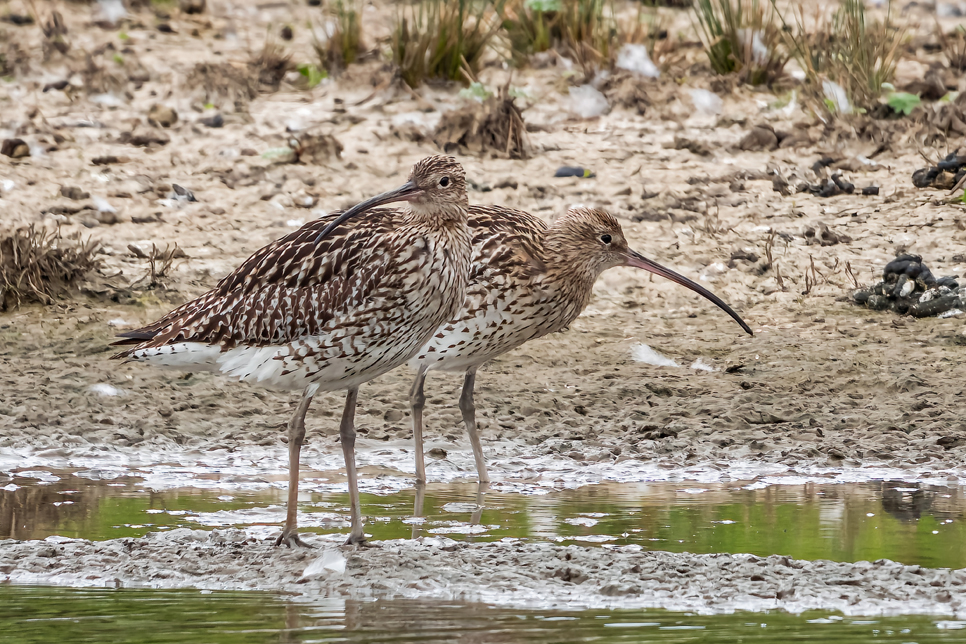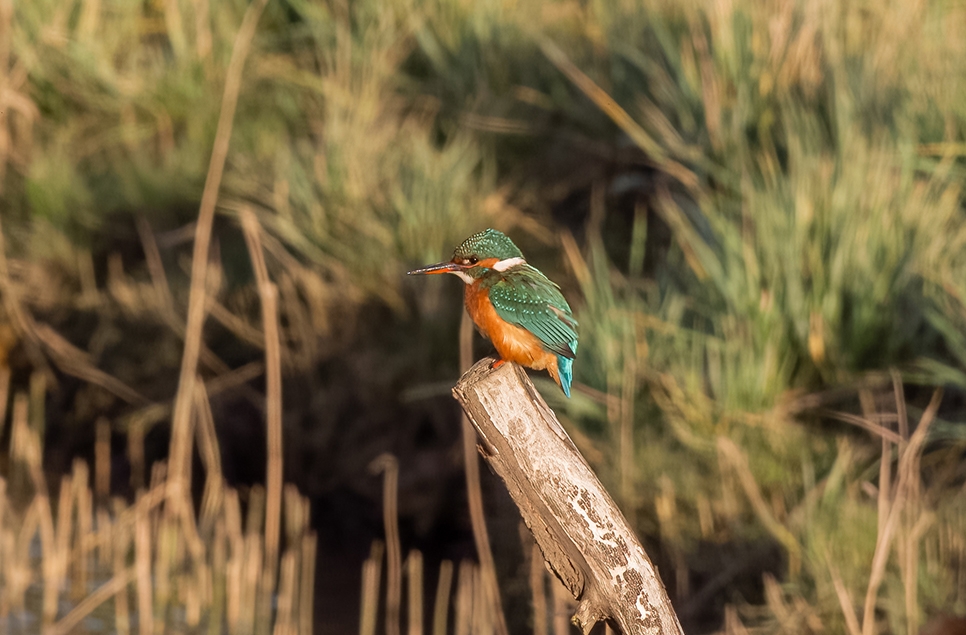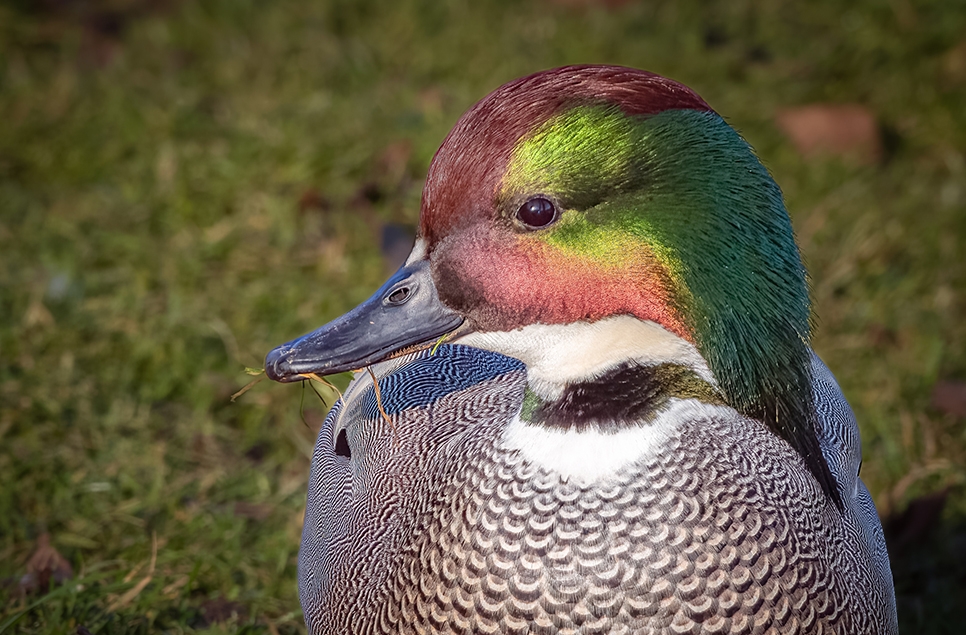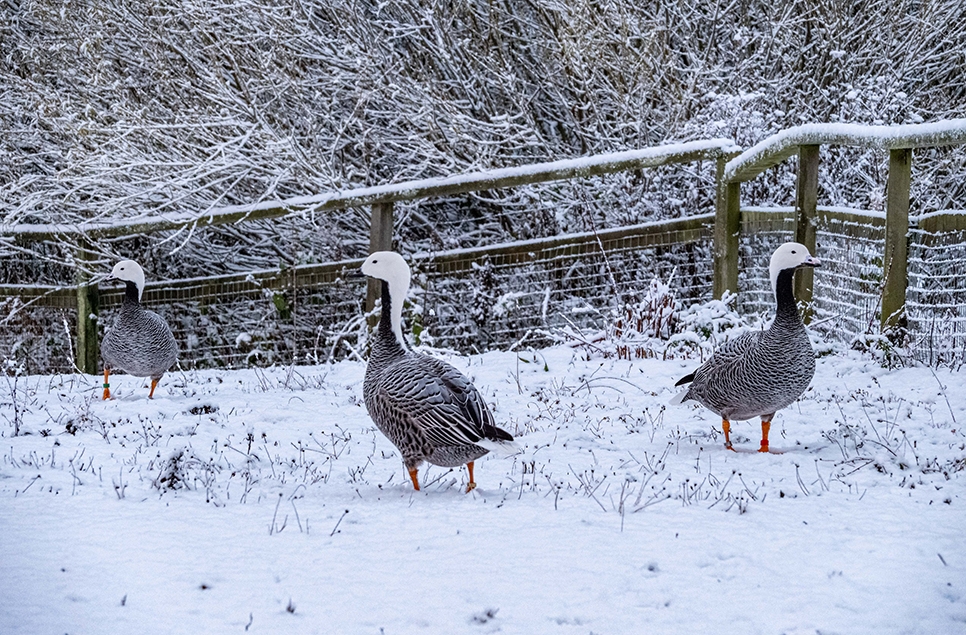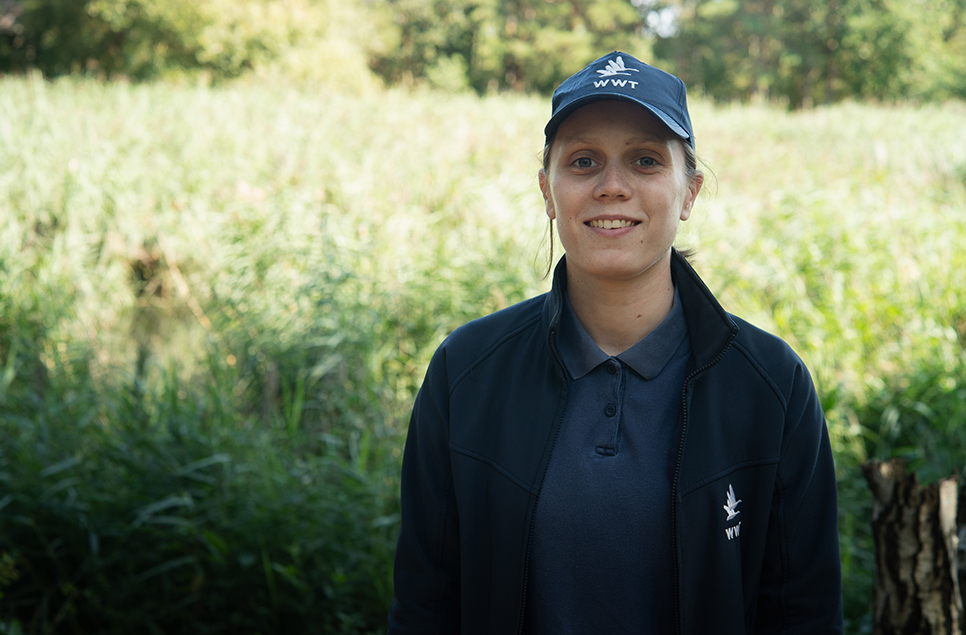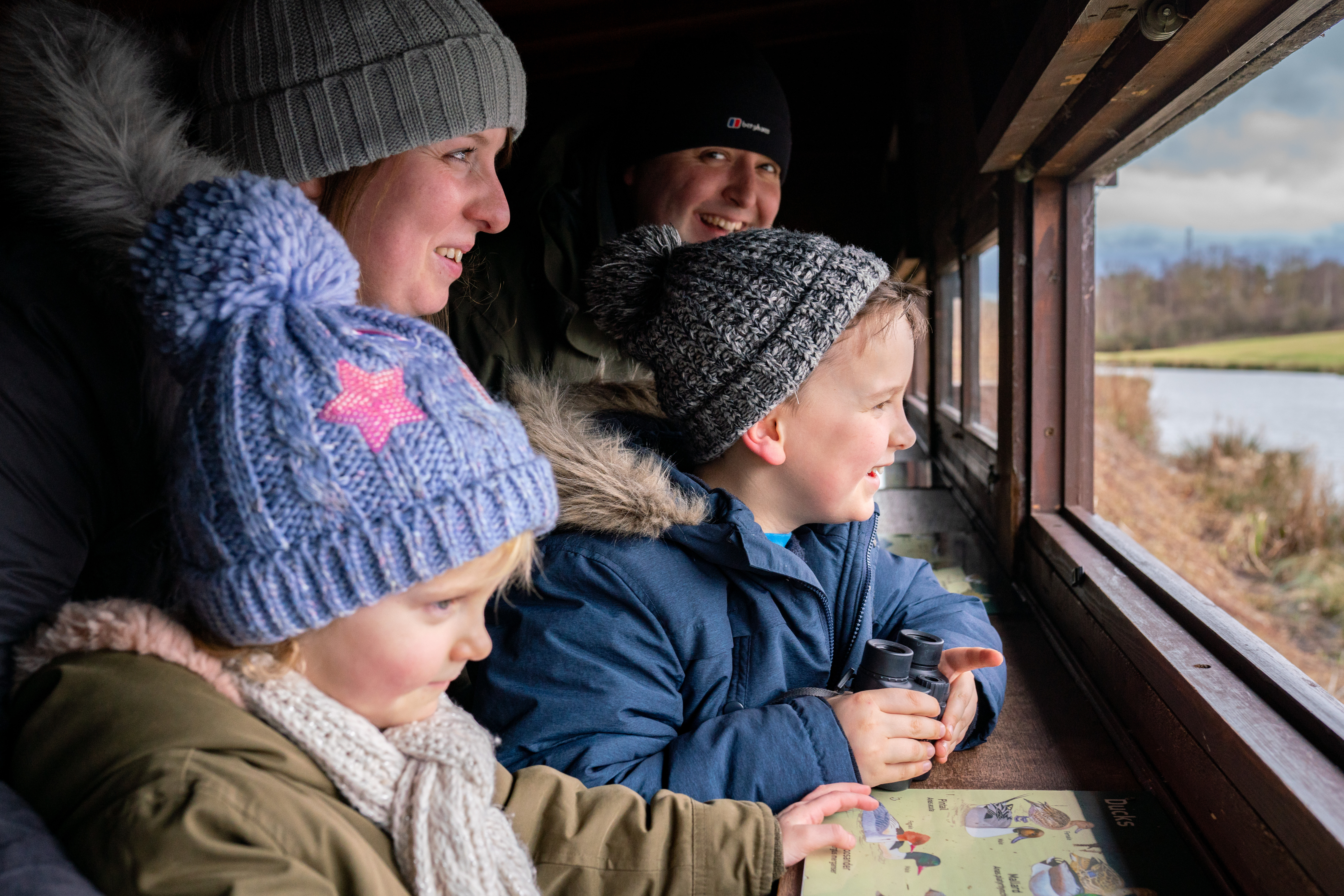Photographing wetland wildlife in autumn
Enjoy some top tips for photographing wildlife at Washington Wetland Centre this autumn thanks to our volunteer photographer, Ian Henderson

Photographing wetland wildlife in autumn, by volunteer photographer Ian Henderson
It’s difficult not to feel the changing seasons as September arrives. You can sense the nights are drawing in and that autumnal nip in the clear morning air.
Our summer breeding visitors have all but gone. The departure of our summer guests brings a tangible sense of peace to the reserve and Wader Lake in particular.
But that’s not to say that the reserve has gone quiet. Far from it! There are still a large number of lapwing and a variety of gulls on the lake.
From mid-August we see black tailed godwits (pictured below), whimbrel, greenshank, dunlin, various sandpipers and even a little stint! The majestic curlews with their haunting, ethereal, call have started to arrive and numbers are already building for their annual roost.
Washington’s wetlands are a convenient stop over for all manner of wildfowl as they head for their overwintering grounds in warmer climes. Some will not move on and instead embrace our wetlands as their winter home.
The hide at the saline lagoon is probably the best place to catch the mercurial kingfisher (pictured below) – a regular visitor at this time of year.
Patience is the key word if you want to photograph them. A DSLR or good bridge camera are best to capture these colourful birds in any detail. With or without a capable camera, they are still a delight to see as they dive for fish from their vantage points above the waters of the lagoon and adjacent reedbed.
All four hides on Wader Lake offer excellent vantage points for photography. The light is still favourable for capturing good shots of static and flying subjects.
I tend to shoot in manual mode with a reasonably wide aperture, shutter speed to match the subject and automatic ISO. You can achieve some great shots with most cameras, even mobiles, but for closer detail a long lens is a must. Because light levels may be lower at this time of year some form of camera support, such as a tripod or bean bag, often helps to get a sharper image.
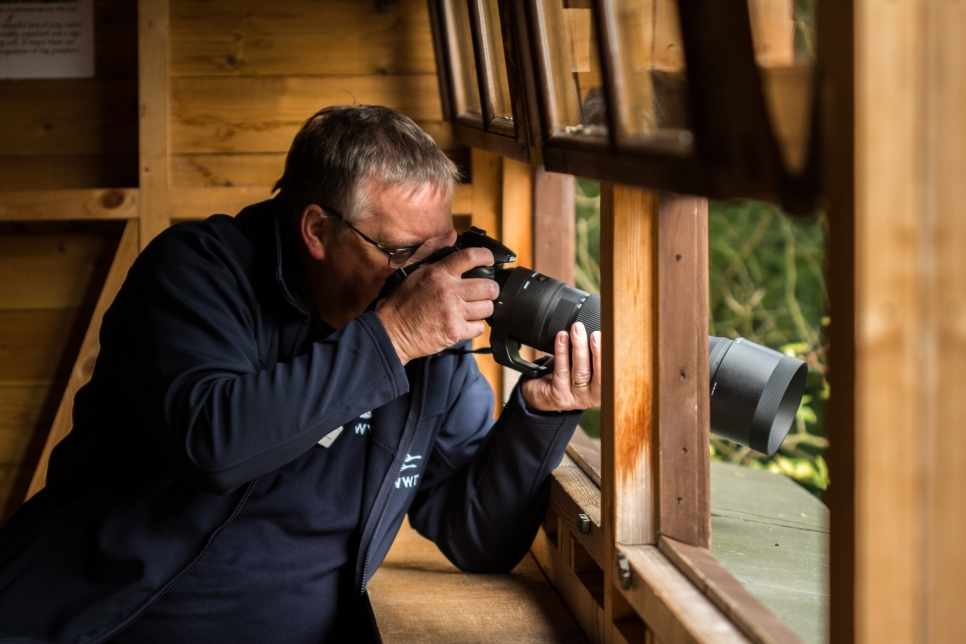
Across the whole reserve the change of seasons brings a range of opportunities for the keen-eyed photographer.
Overhead, the tree canopy presents a changing palette of colour throughout the autumn. You will find berries of many colours offering some great close-up opportunities and down below, for the sharp-eyed observer, a cornucopia of fungi.
Candlesnuff fungi snakes up from the ground while the most striking (in my opinion) is the shaggy ink cap. It crops up in most places but the Lagoon View Hide and close to the river viewpoint are probably the best.
For the macro photography enthusiast, the smaller fungi can provide some amazing opportunities, as do the multitude of insects lurking under rotting branches and leaf mould. There are still the occasional sightings of dragonflies at the east end of the reserve too.

Hawthorn Wood Hide and the Lookout feeding station offer the chance to get up close to a very broad range of woodland birds and others. My favourites are the long-tailed tits from a wide range of tits and finches, not to mention nuthatch (pictured below), tree creeper, great-spotted woodpecker, jay (pictured top of page), brambling, stock dove, robins and the infamous sparrowhawk.
Amongst these many reserve highlights, we mustn’t forget the wonderful collection - a diverse array of birds from around the world, plus our endearing Asian short-clawed otters.
The collection birds offer a wide range of size, colour and personality and are fascinating subjects to photograph at close quarters. Caught in the right light, some have truly amazing plumage. Close Encounters is a great place to start, with the impressive iridescent plumage of falcated ducks and Chiloe wigeon (pictured below).
By the time the clocks have gone back for the winter we see the wonderful, nightly spectacle of thousands of jackdaws congregating on the pylons and power cables to the west end of the reserve. Towards twilight they arrive from all directions in their thousands, murmurating above the site in starling fashion before departing to the warm rooftops of the Nissan factory for an overnight roost.
Places to watch:
If photography is your passion, you will be sure to find inspiration and opportunity wherever you are on site here - 45 hectares of the most diverse wildlife habitats and variety of subjects.
If, however, you don’t care much about photography, just come along anyway and take in a breath of fresh air and the lovely sights and sounds of the autumnal natural world at its best.
Close Encounters: Lots of ducks with very distinctive plumage. Catch them in the sunlight for some amazing colours!
Reedbed and the reservoir: Waterfowl and dramatic views across the river to Penshaw Monument.
Hollowood: Changing colours in the trees, pine cones, woodland birds, insects and fungi.
Hawthorn Wood and The Lookout: Woodland birds. Everything from goldcrest to sparrowhawk plus jay, great spotted woodpeckers, treecreepers, tits, finches and a good many more.
Lagoon View Hide: The best location to spot kingfishers. Also, little egret, kestrel, grey heron, curlew mand many more wildfowl. Just occasionally, you may spot a roe deer, Eurasian otter or fox!
Wader Lake: Curlew, black-tailed godwits, redshank, greenshank, gulls, kestrel, sparrowhawk and teal. If you’re lucky you may also see whooper swans, pink-footed geese, a marauding peregrine falcon, little egrets and spoonbills. At any given time, there are usually lots more different species of wader and gull.
Expect a wide variety of birds on the river: Goosander, pintail, little grebe, cormorant, redshank, oystercatcher and buzzard are on my tick list. If you are lucky, you may spot wild otters and even a seal.
Ready to visit?
If you've been inspired to explore Washington Wetland Centre, find out more and plan your visit online.
Plan your visit